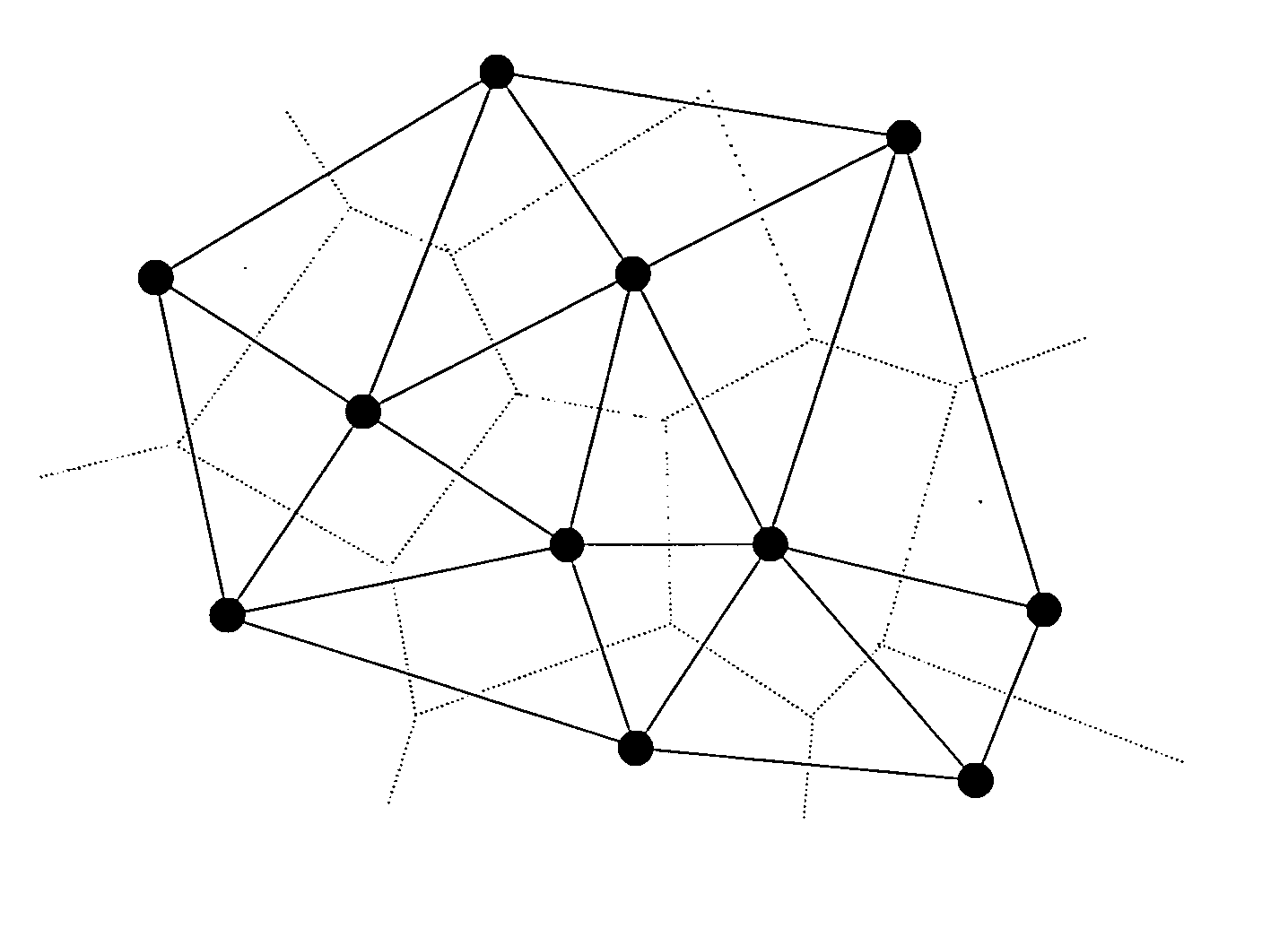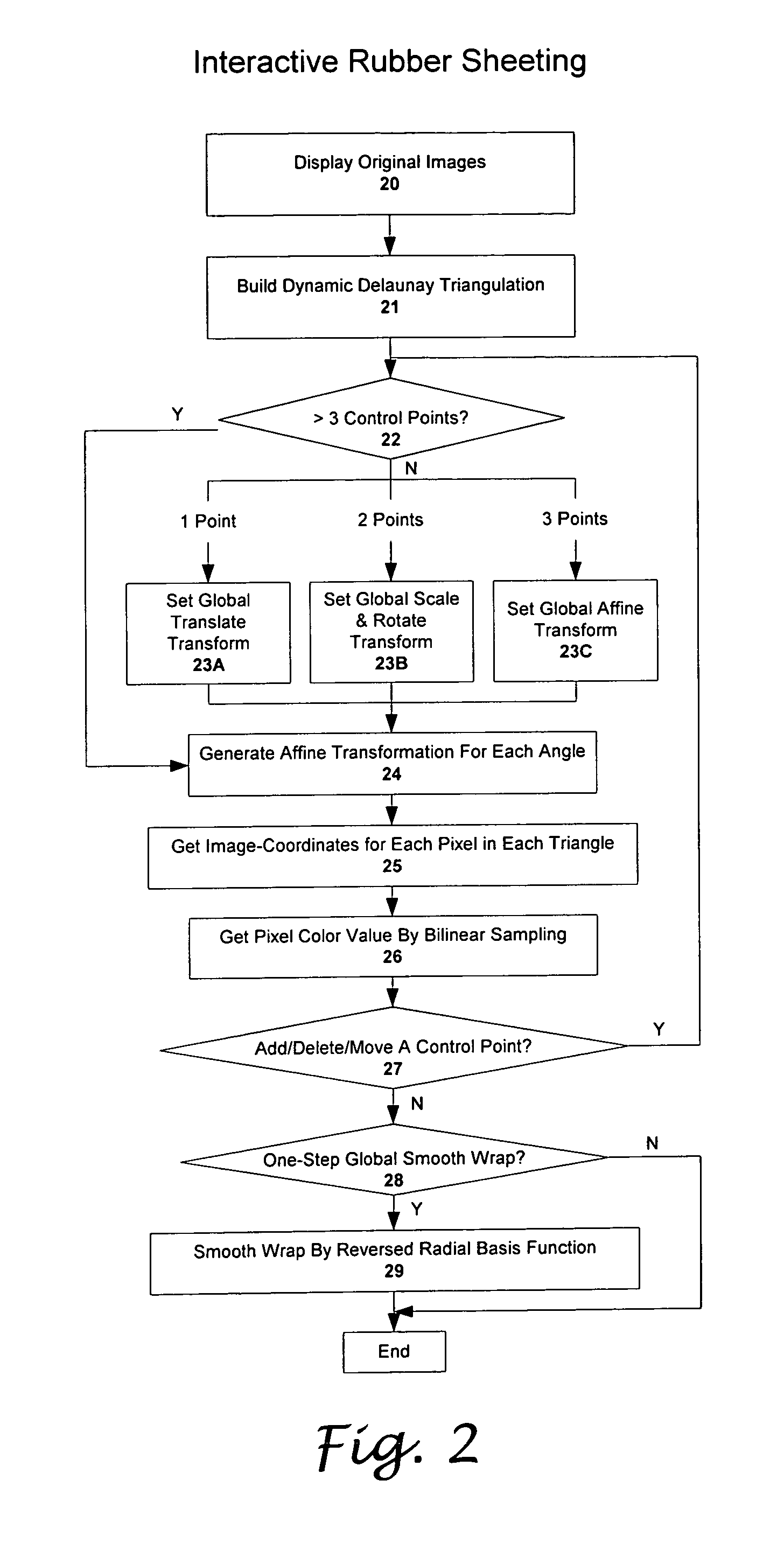Real-time interactive rubber sheeting using dynamic delaunay triangulation
a dynamic delaunay and rubber sheet technology, applied in the field of image warping techniques, can solve the problems of unsatisfactory control points, relatively expensive computation costs, and difficult for non-specialists to provide such a set of proper control points
- Summary
- Abstract
- Description
- Claims
- Application Information
AI Technical Summary
Benefits of technology
Problems solved by technology
Method used
Image
Examples
Embodiment Construction
[0028] As mentioned above, the first step for the rubber-sheet transformation method is to select a number of corresponding control points for location mapping. In this embodiment, Delaunay triangulation that has been the most popular triangulation because of its speed of construction and its nice structural properties is used to decompose an image to be warped, so as to generate the corresponding control points. The Delaunay triangulation of a point set S in R2 is the straight-line dual of the Voronoi diagram of S as shown in FIG. 1. More specifically, for a given point set S, its Delaunay triangulation DT(S) is a triangulation of S such that no other point of S will exists within the circumcircle of every triangle. The edges of a Delaunay triangulation are called Delaunay edges. The existence of a Delaunay edge is guaranteed between a point and its closest neighbor.
[0029] Thus defined, the application of Delaunay triangulation to tessellation provides the advantages of maximizing...
PUM
 Login to View More
Login to View More Abstract
Description
Claims
Application Information
 Login to View More
Login to View More - R&D
- Intellectual Property
- Life Sciences
- Materials
- Tech Scout
- Unparalleled Data Quality
- Higher Quality Content
- 60% Fewer Hallucinations
Browse by: Latest US Patents, China's latest patents, Technical Efficacy Thesaurus, Application Domain, Technology Topic, Popular Technical Reports.
© 2025 PatSnap. All rights reserved.Legal|Privacy policy|Modern Slavery Act Transparency Statement|Sitemap|About US| Contact US: help@patsnap.com



